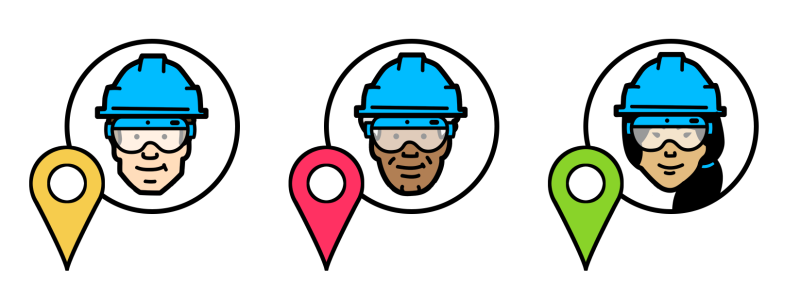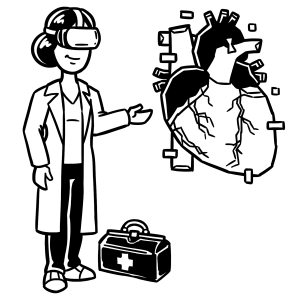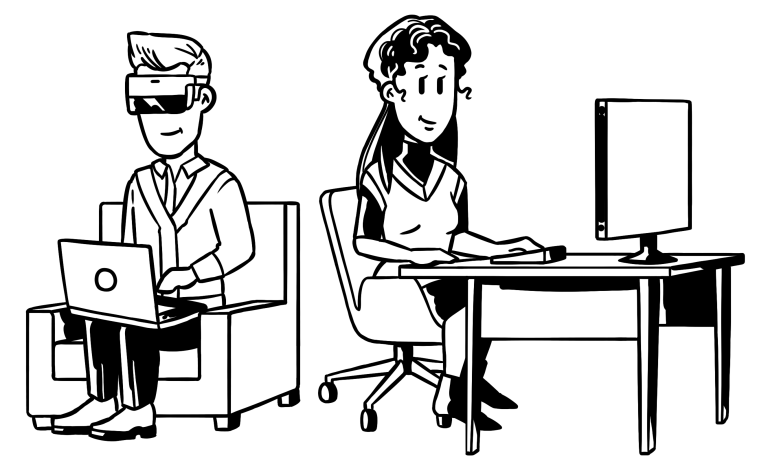The role of augmented reality in modern learning & development
Written by Roy Emmerson | 4th October 2023

With the advancements in technology, the world has witnessed not only the emergence of many new tools but also a wide range of applications for the tools that have already existed. Such as Augmented Reality (AR). A technology mainly used in gaming, AR is now making waves across all industries, and not too long ago, it even strolled its way into the world of EdTech.
How is AR being used in modern learning and development? How big of a role does it play? And what does the future of the virtual world have in stock for us? These are the questions we’re going to answer in this article.
How is AR being used in modern learning and development? How big of a role does it play? And what does the future of the virtual world have in stock for us? These are the questions we’re going to answer in this article.
AR Is becoming accessible
One big reason companies were quite slow at adopting AR was because of the limits imposed by how devices worked. It used to be that only a select bunch could actually get their hands on it, and the price tag for getting it up and running was way up there. On top of that, folks were worried about slow internet speeds causing annoying delays that messed with the UX.
However, all of these concerns are now old news. Devices are getting smarter by the day, and with 5G already knocking on the door, companies are diving headfirst into AR. Sure enough, the education sector is getting in on the action, too.
However, all of these concerns are now old news. Devices are getting smarter by the day, and with 5G already knocking on the door, companies are diving headfirst into AR. Sure enough, the education sector is getting in on the action, too.
Types of lead generation videos you can use
There’s a saying that it’s better to do something once than to hear about it a thousand times. And this couldn’t be more true when it comes to education. You can learn theory for years, but until you actually get your hands on the practical applications, it’s like only scratching the surface.
This is where AR struts in with its game-changing benefits. AR doesn’t just spoon-feed you information. It lets you dive right into the nitty-gritty, making understanding complex concepts as natural as it can be. What’s more, it doesn’t keep you tied to a classroom. As long as you have the necessary equipment, you can embark on a virtual tour from any corner of the world.
Let’s look at some of the other benefits of AR. By realizing its potential, you’ll see for yourself where we’re all heading with it.
This is where AR struts in with its game-changing benefits. AR doesn’t just spoon-feed you information. It lets you dive right into the nitty-gritty, making understanding complex concepts as natural as it can be. What’s more, it doesn’t keep you tied to a classroom. As long as you have the necessary equipment, you can embark on a virtual tour from any corner of the world.
Let’s look at some of the other benefits of AR. By realizing its potential, you’ll see for yourself where we’re all heading with it.

1. Safety
Many jobs entail risks. Take doctors, for example: one wrong move and a life could be at stake. The same can be said about firefighters who need to make split-second decisions to save lives. Pilots often find themselves in situations where the margin for error is razor-thin.
In these demanding professions, the importance of training cannot be overstated. This is precisely where AR steps onto the stage. AR’s immersive situations provide a safe yet realistic environment for professionals to hone their skills and gain valuable practice.
In these demanding professions, the importance of training cannot be overstated. This is precisely where AR steps onto the stage. AR’s immersive situations provide a safe yet realistic environment for professionals to hone their skills and gain valuable practice.
2. Removes barriers
Another remarkable advantage of AR in education is that it helps break convoluted concepts into tangible things, removing the entry threshold that might have held some learners back. For example, subjects like quantum physics or advanced mathematics often leave students overwhelmed.
However, with the magic of AR, even the most complex things can be easily explained. Instead of just reading abstract principles, students can visualize them in 3D, manipulate virtual models, and witness cause-and-effect relationships unfold before their eyes, which can spark a genuine interest in learning.
What’s more, AR training can prove useful even for skilled workers. Through immersive simulations, experienced professionals can stay up-to-date with the latest industry practices, experiment with innovative methods, and refine their skills from the privacy of their homes.
Let’s also not forget about companies that have gone completely remote. With no means to arrange face-to-face training, these companies are taking advantage of AR along with other e-Learning software solutions to provide effective online training for employees and improve their performance.
However, with the magic of AR, even the most complex things can be easily explained. Instead of just reading abstract principles, students can visualize them in 3D, manipulate virtual models, and witness cause-and-effect relationships unfold before their eyes, which can spark a genuine interest in learning.
What’s more, AR training can prove useful even for skilled workers. Through immersive simulations, experienced professionals can stay up-to-date with the latest industry practices, experiment with innovative methods, and refine their skills from the privacy of their homes.
Let’s also not forget about companies that have gone completely remote. With no means to arrange face-to-face training, these companies are taking advantage of AR along with other e-Learning software solutions to provide effective online training for employees and improve their performance.
3. It’s not as expensive as it seems
While bringing virtual experiences to life initially entails high costs, the benefits of AR are long-lasting. The equipment can be reused, and once simulators are ready, they only need occasional maintenance and updates, which even SSBs and MSBs can handle without breaking the bank.
For users, too, using AR is no longer a luxury. Since most gadgets are now equipped with cameras, accelerators, and GPS, they don’t need to invest in specialized gear and can access AR experiences using their smartphones. This accessibility has democratized the use of AR technology across various industries, including RPA in telecom.
For users, too, using AR is no longer a luxury. Since most gadgets are now equipped with cameras, accelerators, and GPS, they don’t need to invest in specialized gear and can access AR experiences using their smartphones. This accessibility has democratized the use of AR technology across various industries, including RPA in telecom.
Future trends
As we peer into the future, it’s clear that AR is poised to reshape the landscape of education in remarkable ways. Here are just some of the predictions already made by analysts.
-
Personal learning:
AR has the capacity to adapt learning materials based on individual learning styles, paces, and preferences. Give it another year or two, and we’ll dive into the world of textbooks interacting with students and giving feedback in real time.
-
Global collaboration learning:
There will be no geographical boundaries in the world of education, enabling students from all walks of life and different backgrounds to tap into immersive virtual environments.
-
Incorporation of gamification and AI:
AR, combined with AI, will take learning to a whole new level. Not only will it swiftly adjust content based on the student’s learning needs, but it will also offer a more fun way of engaging with educational material.
-
Expanding beyond visuals:
It’s also predicted that the future might see integration of other senses, involving touch, sound, and even smell. This multi-sensory approach will provide more inclusive experiences and make education accessible to everyone.
In addition, looking at the future e-learning industry trends, we can say with confidence that many schools will continue to work remotely, even though the pandemic is over.

Final words
To bring it to an end, the future of AR in education is full of promise. By making interactions more engaging and immersive, the education sector will open doors of opportunities to learners of all ages and different cognitive styles.
It will also provide risk-free environments for demanding professions, like doctors, engineers, pilots, firefighters, and many others, enabling them to hone their skills before they move on to practice.
Companies working with remote staff will benefit from it, too. Instead of making employees fly a long distance for training, AR will bridge the gap, bringing training right to their fingertips, regardless of their physical location.
All told, it’s obvious that the AR journey has begun, and the destination promises a revolution in how we acquire knowledge and shape our understanding of the world around us.
It will also provide risk-free environments for demanding professions, like doctors, engineers, pilots, firefighters, and many others, enabling them to hone their skills before they move on to practice.
Companies working with remote staff will benefit from it, too. Instead of making employees fly a long distance for training, AR will bridge the gap, bringing training right to their fingertips, regardless of their physical location.
All told, it’s obvious that the AR journey has begun, and the destination promises a revolution in how we acquire knowledge and shape our understanding of the world around us.
Author's Bio

Roy Emmerson is the co-founder of TechTimes.com, a B2B SaaS platform that helps businesses stay up-to-date on the latest technology trends. With over a decade of experience in the tech industry, Roy is a thought leader in the field and is passionate about helping companies embrace new technologies to improve their operations and drive growth.
